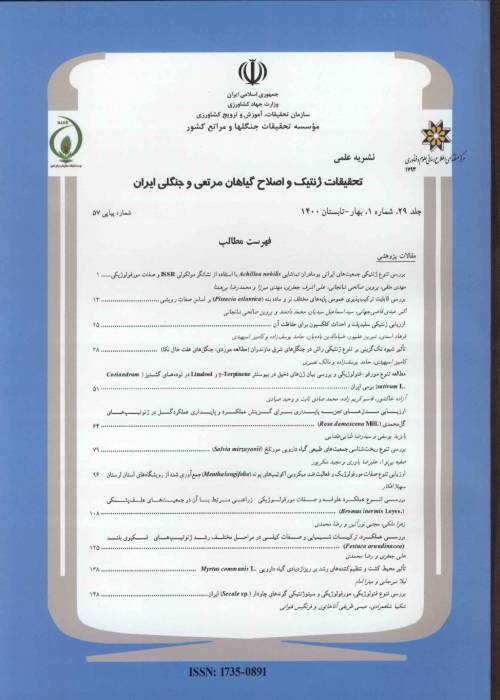The effect of salicylic acid on some morpho-physiological parameters and gene expression in peppermint (Mentha piperita L.) under UV-B radiation
The thinning of the ozone layer due to nitrogen oxides and halogenated hydrocarbons has caused an increase in ultraviolet radiation on the planet. This radiation can affect many physiological and anatomical characteristics of plants. This study aimed to investigate the effect of UV-B radiation on the morphological, physiological, and molecular parameters of the peppermint plant (Mentha piperita L.) and the effect of salicylic acid (SA) on reducing the harmful effects of this radiation.
The eight treatments, including 0.0SA, 0.5mM SA, 1mM SA, 2mM SA, UV-B, SA0. 5+UV-B, SA1+UV-B, and SA2+UV-B were evaluated using a completely randomized design with three replications. Treatments were applied four weeks after planting. Different concentrations of SA were applied as a foliar spray three times at an interval of 10 days. UV-B rays were applied for eight days (40 min each day). Different morpho-physiological parameters were measured. For the gene expression assay, leaf samplings were done one day after the UV treatment stop (named first stage; 18 days after SA spraying) and after recovery time (named second stage; 30 days after SA spraying).
Compared to the control plants, UV-B radiation caused a significant decrease in the roots' fresh and dry weight. The highest root fresh and dry weights were observed in the SA1mM and the lowest in the UV-B treatments. Under the influence of UV-B rays, the number of leaves significantly decreased in peppermint compared to the control. The highest number of leaves was observed in the SA0.5mM, and the lowest in the UV-B treatment. The amount of anthocyanin under UV-B rays increased significantly compared to control plants. The highest amount of anthocyanin was observed in SA1+ UV-B and the lowest in control plants. The amount of soluble protein in shoots and roots significantly decreased under UV-B rays compared to the amount in the control plants. The highest amount of soluble protein was observed in the shoots in the SA2mM and the roots in the SA2+ UV-B, and the lowest amount was observed in the shoots and roots under UV-B treatment. The amount of proline increased significantly in the shoots and roots under UV-B radiation compared to control plants. The highest amount of proline was observed in shoots and roots in the SA0.5+ UV-B and the lowest amount was observed in the control plants. LS gene expression increased in recovery time compared to the first stage.
The results showed that the application of UV-B rays to the peppermint plant caused a decrease in the fresh and dry weight of the root, the number of leaves, soluble protein, and LS gene expression and a significant increase in the amount of anthocyanin and proline. Treatment using salicylic acid reduced the damage caused by applying the UV-B rays to the plants.
- حق عضویت دریافتی صرف حمایت از نشریات عضو و نگهداری، تکمیل و توسعه مگیران میشود.
- پرداخت حق اشتراک و دانلود مقالات اجازه بازنشر آن در سایر رسانههای چاپی و دیجیتال را به کاربر نمیدهد.




